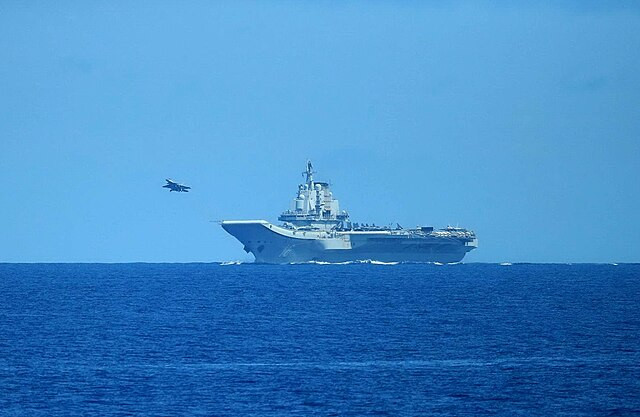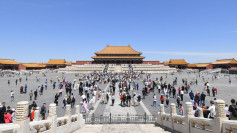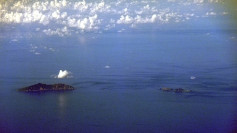China deployed two aircraft carriers in the western Pacific for simultaneous operations over the weekend, marking the first known instance of such a maneuver beyond the strategic Second Island Chain, Japanese defense officials said Tuesday. The move signals Beijing's deepening push to expand its blue water naval capabilities and challenge U.S.-led regional security architecture.
Japan's Ministry of Defense reported that the Liaoning and Shandong, China's two active aircraft carriers, were operating in separate areas of the Pacific Ocean. The Shandong and four escort vessels were tracked roughly 340 miles southeast of Miyako Island conducting flight operations involving fighter jets and helicopters, while the Liaoning was observed southwest of Minamitori Island with a strike group that included missile destroyers and a fast combat support ship.
Japan dispatched aircraft and naval assets to monitor the movements. Defense Minister Gen Nakatani said at a press conference that "Japan's prompt disclosure of information concerning the carriers underscores its commitment to deter any forceful, unilateral shifts in the regional status quo."
Beijing defended the operations, asserting their legality under international maritime law. Chinese naval activities in relevant waters are "fully consistent with international law and international practices," Chinese Foreign Ministry spokesperson Lin Jian said Monday. "China has always pursued a defensive national defence policy and hopes that the Japanese side will look at the matter objectively and rationally."
The operations took place within Japan's exclusive economic zone, prompting Tokyo to voice concern while stopping short of formal condemnation. The Shandong's activity was documented near Okinotorishima, Japan's southernmost territory, and within its 230-mile-wide EEZ, a maritime zone defined under the U.N. Convention on the Law of the Sea.
China's dual carrier presence comes amid a broader pattern of increased naval and coast guard deployments in the East China Sea and the Taiwan Strait. Military analysts say the operation highlights a maturing Chinese blue water navy and serves as a signal to both Japan and the United States.
"In the event of a conflict, a PLA Navy that is the U.S. Navy's equal is not one that fights in the Western Pacific-it's one that challenges for control of the Central Pacific," Tom Shugart, a former U.S. Navy submariner and fellow at the Center for a New American Security, told Newsweek.
"China is now, by far, the world's dominant maritime power by every measure other than sheer naval tonnage," Shugart added.
Australia-based naval analyst Alex Luck told Newsweek that the Chinese carrier force is intended to "add strategic space across the Pacific, aimed at making American deployments near the Chinese mainland more challenging."
The Liaoning and Shandong were previously observed conducting joint operations in the South China Sea last October, and analysts expect more such missions in the future. "I would expect [the Chinese navy] to schedule repeats and increasing complexity for such future activities," Luck said, noting that China's third carrier, the Fujian, will soon enter service with a more advanced aviation wing.






